 Featured: Victoria Secret Peasant Skirt
Featured: Victoria Secret Peasant Skirt
You’ll ♥ this easy-to-sew skirt…XOX.
You will need:
- Approx. 1 ½ to 3 yds. of fashion fabric (depends on fabric weight and width)
- Coordinating thread
- Heavy-duty topstitching/upholstery thread
MEASUREMENTS
Waist – measure around narrowest part of torso (just above navel level)
Hips – measure around the fullest part of the seat, about 8” [20cm] below the waistline.
Finished Skirt Length – measure vertically from waist to desired hemline.
PATTERN
This is a simple block draft. You can plot it directly onto your fabric but you will need to determine the dimensions of the panels you are going to cut.
(This also will help you determine how much fabric to purchase.)
Designer Tip: If you wish to use a printed fabric, look for a print that has been “railroaded”, that is the print runs along the fabric’s length. That way, you needn’t piece the fabric together to create the tiers.
XOX Block Draft

Measure the hip. You may round up the measurement to the nearest ½” [12mm].
O = (hip measurement + 2” [5cm] ) divided by 2.
Next, determine the desired length of each tier; divide the finished skirt length by the number of tiers you desire. You may round up to the nearest ½” [12 mm]. The featured model from Victoria’s Secret has 3 tiers and is approximately 21″ [53.5cm] long.
X = (finished skirt length + 2 ½ ” [6.5 cm] ) divided by 3.
For example: for a size 14 hip measurement of approximately 38” [96.5 cm] and the finished skirt of approximately 21″ [53.5 cm] long, the tiers are 7 ¾ ” [19.5 cm] long.
Again, you may round your answer a little if needed; this is not exactly rocket science.
O = 20” [51cm]
X = 8” [24 cm]
Time to plot and cut.
Determine if the fabric print runs up-and-down OR railroaded (sideways) on the surface.
Now to add fullness to each panel width. Gathering is usually a 2:1 ratio. (If you choose a thin/lightweight fabric you may need a greater ratio.)
 You will cut 2 panels to make each tier. (skirt front & back).
You will cut 2 panels to make each tier. (skirt front & back).
Plot a 2” [50 mm] band across the fabric’s width OR length. (see layout diagram)
Set up XOX block as illustrated.
Top Panel = 1 block
Middle Panel = 2 blocks
Bottom Panel = 3 blocks
Designer Tip: Short on fabric? Try cutting the second tier in a contrasting colour or fabric.

Now you have all of your skirt pieces and are ready to start sewing!
*Designer Tip: Embellish your tier panels with flat ribbons or braids if desired.
ASSEMBLY
1. Attach the pair of 2” [50 mm] bands together at one short end to create a drawstring. Fold along its length and press flat. Open the fold and turn in raw edges ¼” [6 mm]. Refold and edgestitch along the length on the open side, then along the fold side. Knot each end.
2.  With right sides facing each other, sew the side seams together on each pair of panels using ½” [12 mm] seam allowance. Edge finish each of these seams with an overlock machine if you have access to one, otherwise trim with pinking shears to keep the raw edges from unraveling. Press seams open. There are now 3 “loops” of fabric, one for each tier.
With right sides facing each other, sew the side seams together on each pair of panels using ½” [12 mm] seam allowance. Edge finish each of these seams with an overlock machine if you have access to one, otherwise trim with pinking shears to keep the raw edges from unraveling. Press seams open. There are now 3 “loops” of fabric, one for each tier.
3.  At this point, sew a narrow double-rolled hem around the entire bottom edge of the lower tier. Press up 1/2″ [12 mm], open the fabric back out, and press the raw edge in to meet the first crease. Sew the rolled hem.
At this point, sew a narrow double-rolled hem around the entire bottom edge of the lower tier. Press up 1/2″ [12 mm], open the fabric back out, and press the raw edge in to meet the first crease. Sew the rolled hem.
4. Edge finish the upper edge of the top tier. Fold 1 ¼” [30 mm] to the inside and press to form a casing for the elastic. Turn raw edge under ¼” [6 mm] then stitch about 1″ [25 mm] from the fold all the way around.
5. On the top edges of the middle and bottom tiers (and with right sides facing up), sew a wide zigzag machine-stitch over the heavy-duty thread all the way around the seam allowance.
6. Starting with the bottom tier, grasp the heavy-duty thread ends and start pulling gently to form gathers in the fabric. When the circumference of this edge matches that of the lower edge of the middle tier, stop and tie your thread ends together to keep everything in place. Then slide the gathers around until you are happy that they are distributed fairly evenly.
7. Flip the middle tier inside out so that the right sides (the face of the fabric) are facing each other and pin it to the bottom tier — the bottom edge of the middle tier (the edge without the gathering) should match up to the top gathered edge of the lower tier and the right sides should be together. Pin/baste this seam just below the zigzag stitching. (basting is your friend on this project!) Now, flip it right side out and check your gathers and re-adjust if necessary. Machine stitch this seam along the basting; then remove the heavy-duty thread and basting.
8. Repeat the procedures from Steps 6 and 7 to attach the middle tier to the top tier.

9. Serge or pink the gathered seam allowances you’ve just sewn to finish the raw edges.
10. On the outside edge of the ‘waistband’ casing, open 1” [2.5 cm] on one seam carefully with a seam ripper. Thread the drawstring through the top casing. (Alternatively, you may use elastic in the casing, if desired)
 Featured: Escada Wrap
Featured: Escada Wrap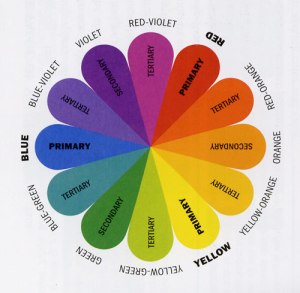 Red + Orange
Red + Orange
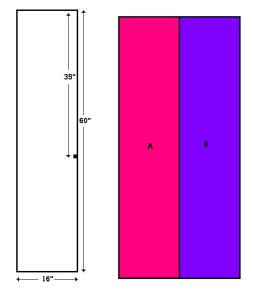
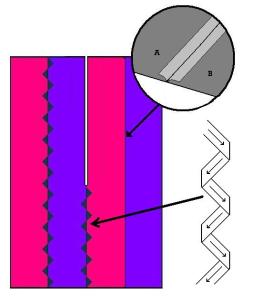
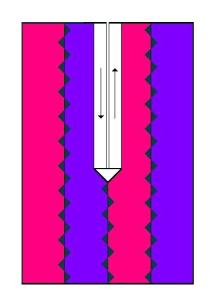




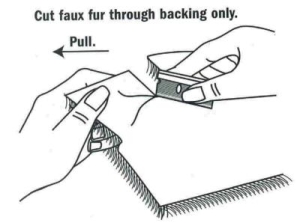 Fur – cut 1X self * in faux fur
Fur – cut 1X self * in faux fur With the fur face up, tape the edges with the twill tape a second time. This time “push” all the hairs beneath the tape and overcast a whipstitch along the edge of the twill tape and fur catching the first taping on the underside. Keep your hand-stitches small and even. (2)
With the fur face up, tape the edges with the twill tape a second time. This time “push” all the hairs beneath the tape and overcast a whipstitch along the edge of the twill tape and fur catching the first taping on the underside. Keep your hand-stitches small and even. (2) Fold the fur piece in half lengthwise and butt taped edges together. Use a
Fold the fur piece in half lengthwise and butt taped edges together. Use a